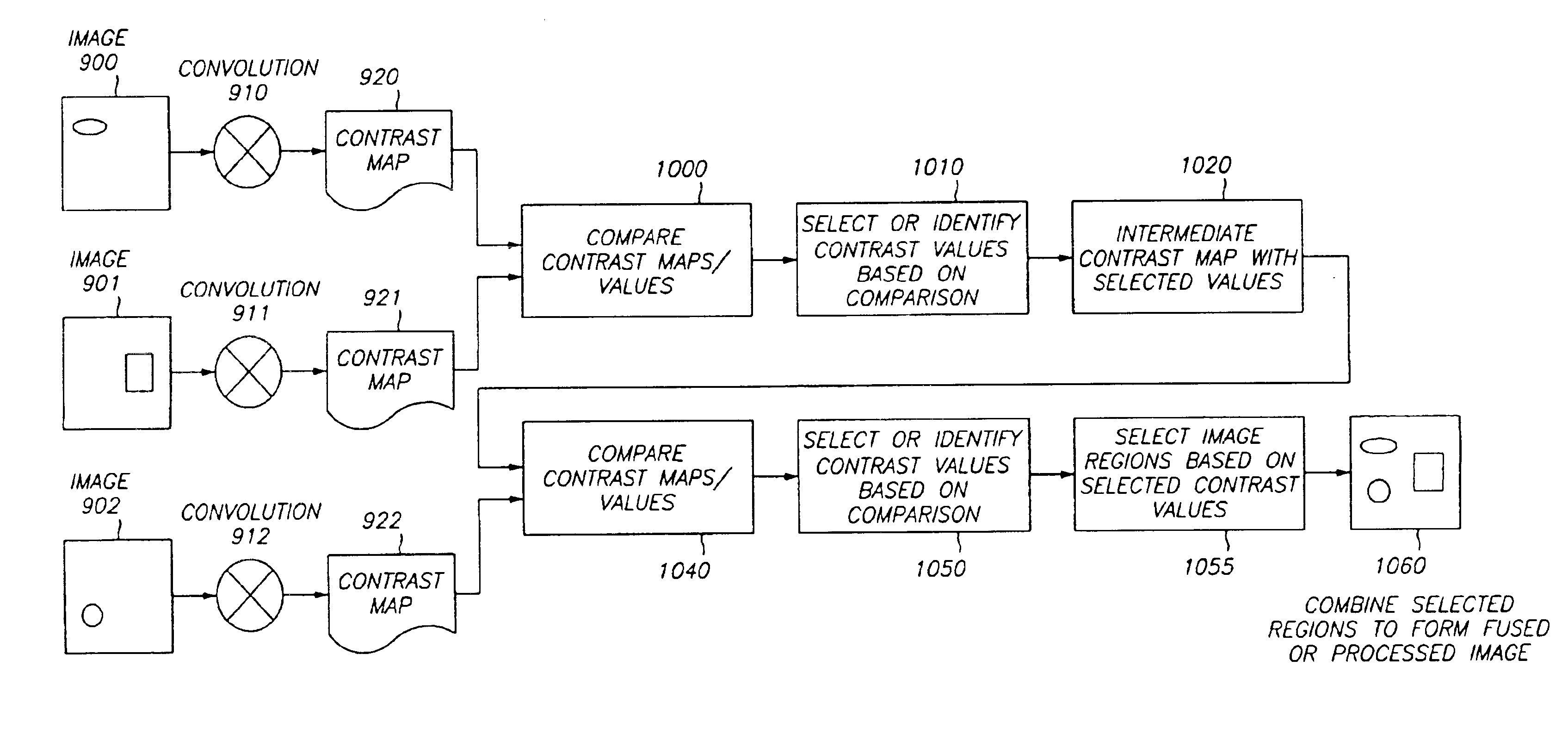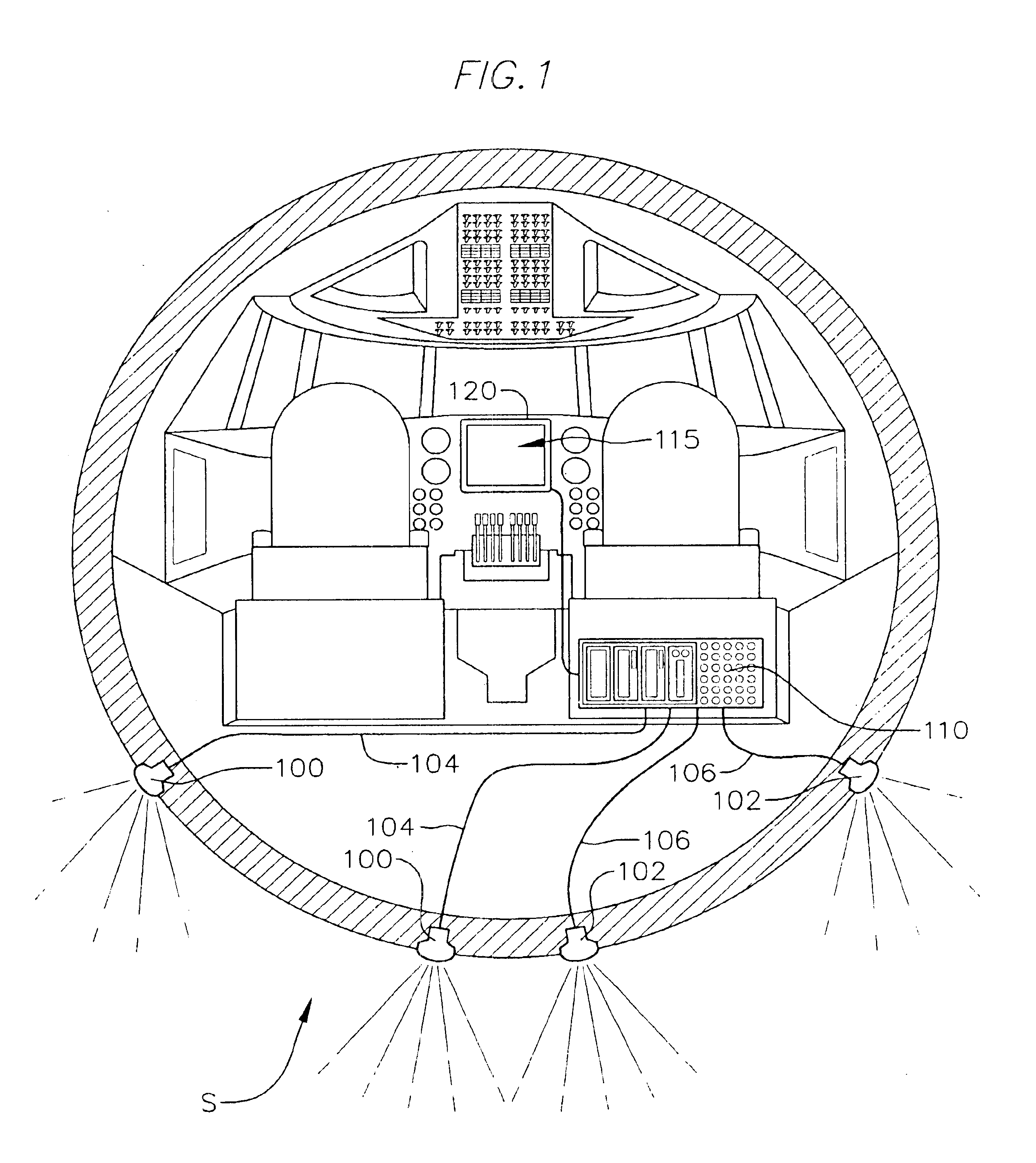Image fusion system and method
a technology of image fusion and image, applied in the field of image fusion system and method, can solve the problems of undesirable effect, unusable and unnecessary distortion, and decrease the contrast and quality of the bright image region
- Summary
- Abstract
- Description
- Claims
- Application Information
AI Technical Summary
Benefits of technology
Problems solved by technology
Method used
Image
Examples
Embodiment Construction
[0031]In the following description of embodiments of the invention, reference is made to the accompanying drawings which form a part hereof, and which is shown by way of illustration specific embodiments in which the invention may be practiced. It is to be understood that other embodiments may be utilized as structural changes may be made without departing from the scope of the present invention.
[0032]With reference to FIG. 1, a view from a cockpit in an aircraft, a system S of the present invention is shown, having sensors 100, 102 and a processor 110 and a display 120. The sensors 100, 102 provide respective image data or streams 104, 106 (i.e., sensor or source images) to the processor 110, e.g., a computer, micro-controller, or other control element or system. The sensors can detect the same, overlapping, or different wavelengths. Moreover, the sensors can also detect the same field of view, or overlapping fields of view.
[0033]The processor 110 is programmed to selectively combi...
PUM
 Login to View More
Login to View More Abstract
Description
Claims
Application Information
 Login to View More
Login to View More - R&D
- Intellectual Property
- Life Sciences
- Materials
- Tech Scout
- Unparalleled Data Quality
- Higher Quality Content
- 60% Fewer Hallucinations
Browse by: Latest US Patents, China's latest patents, Technical Efficacy Thesaurus, Application Domain, Technology Topic, Popular Technical Reports.
© 2025 PatSnap. All rights reserved.Legal|Privacy policy|Modern Slavery Act Transparency Statement|Sitemap|About US| Contact US: help@patsnap.com



